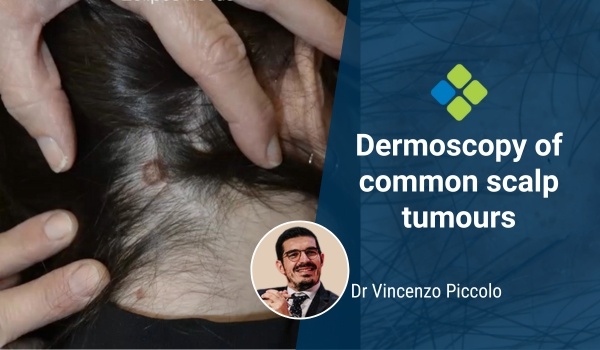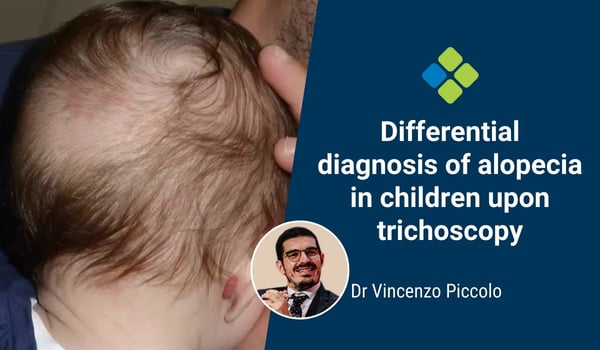Dermoscopy of pilomatricoma in children
Dr Vincenzo Piccolo discusses the dermoscopy of pilomatricoma (a common benign tumour associated with hair follicles, usually appearing in childhood).

HealthCert Education
In his latest video update, Dr Vincenzo Piccolo discusses the dermoscopy of pilomatricoma in children.
Pilomatricoma is a common type of benign adnexal skin tumour associated with hair follicles, usually appearing in childhood. It is derived from immature hair matrix cells presenting as a single, bluish-red surface colour papule or nodule. These tumours typically arise on the face, most commonly in children.
In this video, Dr Piccolo discusses the clinical characteristics of pilomatricoma and the clues you might use to identify it in your own practice. Pilomatricoma is painless for the patient. Dr Piccolo explains how the tumour reacts to physical palpation.
He takes us through the findings of a recent paper published in the Journal of the European Academy of Dermatology and Venereology, which explored the dermoscopy of pilomatricoma via a retrospective descriptive study of 35 paediatric patients.
Then, Dr Piccolo walks through a series of real patient cases and discusses the clinical and dermoscopic characteristics of the pilomatricoma tumours, and explains the differential diagnoses and how best to avoid unnecessary excisions of lesions in children.
Learn about all this and much more in the full video below.
For further information on this topic, learn more in the HealthCert's online Professional Diploma program in General Dermatology.
Watch the full video with Dr Vincenzo Piccolo:
Watch another update with Dr Vincenzo Piccolo: Cradle cap: Clinical features and therapy
Engaging with this blog can help meet your annual
|
|
|

 1800 867 1390
1800 867 1390







